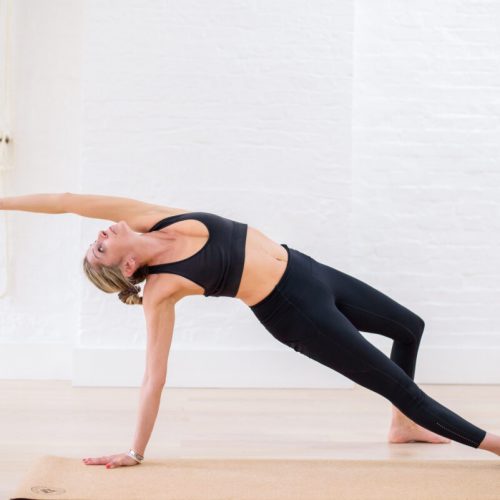Mindfulness is the art of being aware without judgment of all that’s going on in your mind at any given time. It involves focusing on the present moment and taking note of how you feel, what you’re thinking about, and what your surroundings look like.
When mindfulness becomes a habit, not only do we have more control over our thoughts but also an increased sense of well-being from living in the now.
Stress relief alone can transform your life by reducing anxiety or depression through mindfulness meditation techniques such as mindfulness transcendental meditation or mindfulness-based stress reduction (MBSR). Not only will this reduce your stress, but mindfulness can also boost your brain power by improving your memory and making you more creative. If mindfulness is so great for mental health, why isn’t mindfulness talked about more?
What is mindfulness?
Mindfulness is defined as “A mental state achieved by focusing one’s awareness on the present moment, while calmly acknowledging and accepting one’s feelings, thoughts, and bodily sensations.”
Mindfulness is known to improve mental health while also boosting our brain power by improving memory and making us more creative.
Why isn’t mindfulness talked about more? Mindfulness can be confusing, with so many different types of practices around the world it becomes hard for people to understand what this all entails.
In the next section, we’ll cover some of the most effective mindfulness practices to help you become more present with your thoughts and feelings in your everyday life.
Types of mindfulness
There are a few different types of mindfulness practices that you can get started with today including:
-
Sitting meditation
-
Walking meditation
-
Body scan meditation
-
Mantra-based meditation
Let’s explore each of these types of mindfulness practices in more detail.
Sitting meditation
There are heaps of different types of sitting meditation you can try. My favourite is known as Vipassana meditation, also known as mindfulness meditation. Vipassana is a form of insight meditation and has become widely popularized in the Western world by Buddhist teacher, Joseph Goldstein.
To perform vipassana meditation you start by finding a quiet place to sit. Then, you simply focus on your breath and begin noticing when thoughts pop into your head.
You then simply acknowledge the thought (known as labelling) before bringing yourself back to focusing on your breathing again.
It sounds simple, but if you haven’t sat with your thoughts quietly before this can be extremely difficult.
The meditation technique is all about training your mind to be more aware of the present moment and less focused on what has happened in the past or worrying about what might happen in the future.
This type of mediation, while extremely beneficial for mental health, can also have a profound effect on physical wellbeing too.
I highly recommend downloading the Insight Timer app on your iPhone or Android smartphone and searching for a guided Vipassana meditation to get used to this practice.
Walking meditation
If sitting still isn’t for you, and you’d like to try a more active form of mindfulness practice that’s okay! Walking meditation is just as beneficial for your wellbeing, and it’s easy to do.
This type of mediation is also known as kinhin meditation in Japan, where you walk at a slow pace with deep breathing while concentrating on the movement of each footstep.
Mindfulness walking meditation will not only help improve mental health but can also lower cortisol levels in the body.
Walking meditation is a good alternative for those who have difficulty sitting still or suffer with pain, insomnia and fatigue.
People battling depression will also benefit from mindfulness walking because of the greater number of steps you take per day when practising this type of mediation.
How to do it
A good way to start walking meditation is to try to be aware of each footstep you take, making sure that it is balanced and even.
It should help if you imagine your feet are like the roots of a tree – they should connect with the ground firmly but gently at all times.
Your focus also needs to shift from one step to another while practising mindfulness walking meditation. You should make sure you let go of each foot as it leaves the ground and shift your attention to the next step.
Body scan meditation
Body scan meditation is a type of meditation that is a great way to become aware of your entire body, from head to toe.
This type of mediation involves systematically focusing on each part in turn and letting go of the thoughts you have about it. As you focus on one area after another, this will give your mind a chance to settle down and clear itself out for a while.
Body scan meditation can also help you to become more aware of any tension in your muscles and let go of it too, which is a fantastic way to use this technique for relaxation purposes.
It’s very easy to practice the body scan method and all that’s required from you is simply lying down on your back or sitting.
How to do it
To do a mindful body scan you need to start by lying down comfortably on your back with the palms of your hands facing upwards and your legs comfortably stretched out.
Next, close your eyes and focus on the physical sensations you feel as you inhale and exhale deeply for a couple of minutes. After this, move further along your body (either up or down) as you become aware of different parts of it such as the head, eyes, mouth and arms.
Perform this mindful body scan for anywhere from 5 – 15 minutes. It can help to follow along to a guided body scan meditation which can be found on YouTube or an app like Insight Timer.
With each practice, it may take some time to see the benefits and changes in your mind and body so be patient with yourself as you learn the ropes of mindfulness. There are also many apps available that can help guide you through these practices if you’re just starting out or would like additional support.
Mantra meditation
Another type of mindfulness meditation that I recommend to guys is mantra meditation.
For mantra meditation, you’ll be closing your eyes and focusing on the repetition of a word or phrase that holds special meaning for you. This is called the ‘mantra’. You can choose any type of word or combination of words that are meaningful to you like “breathe” or “calm mind”.
One type of mantra meditation that I suggest trying out for yourself is transcendental meditation (also known as TM). To get started with transcendental meditation, check out my video on YouTube for detailed instructions or download the app 1 Giant Mind.
Does mindfulness work for men?
Mindfulness can be a very powerful tool for men to use, especially when it comes to improving your life.
One of the many benefits that mindfulness can have is helping you cope with difficult emotions and negative thoughts. Mindfulness may not be as strong as using other coping skills or techniques but it’s still better than ignoring those feelings completely without dealing with them.
In my own personal experience, mindfulness has helped me more than anything else when trying to handle my emotions – especially in difficult periods of my life such as work stress or recovering from addiction.
How can a man be mindful?
A man can be mindful in any situation, regardless of how he is feeling. Mindfulness can be achieved by focusing on the present moment and accepting what you are currently experiencing without judgement or reaction.
One way to practice mindfulness is through meditation which helps your mind become more aware and in tune with its surroundings. Meditation may not always result in a state of complete peacefulness but it does help you to focus on the here and now.
In certain situations, mindfulness may be challenging but with practice, it becomes easier to allow a man to embrace his current emotions rather than fighting them or avoiding them by escaping into distractions such as alcohol, drugs or workaholism.
Do real men meditate?
The short answer is yes, real men meditate!
Mindfulness has been proven to reduce stress and anxiety as well as help you become more productive in your life (by focusing on the present). By practising mindfulness, we men can learn how to deal with emotions such as anger or sadness rather than suppressing them which results in feelings of depression or isolation.
The wrap-up
Mindfulness is a great way for men to take care of their mental health. It can be used as an effective form of treatment when combined with other forms of therapy or medication, but it also has the power to help someone live more happily and successfully in general.
Practising mindfulness helps us learn how to deal with emotions such as anger or sadness rather than suppressing them which results in feelings of depression or isolation. Instead, we’re able to embrace these difficult situations and allow ourselves time for reflection so that they don’t have lasting effects on our lives.
If you have any questions about incorporating mindfulness into your life, feel free to leave a comment below!



